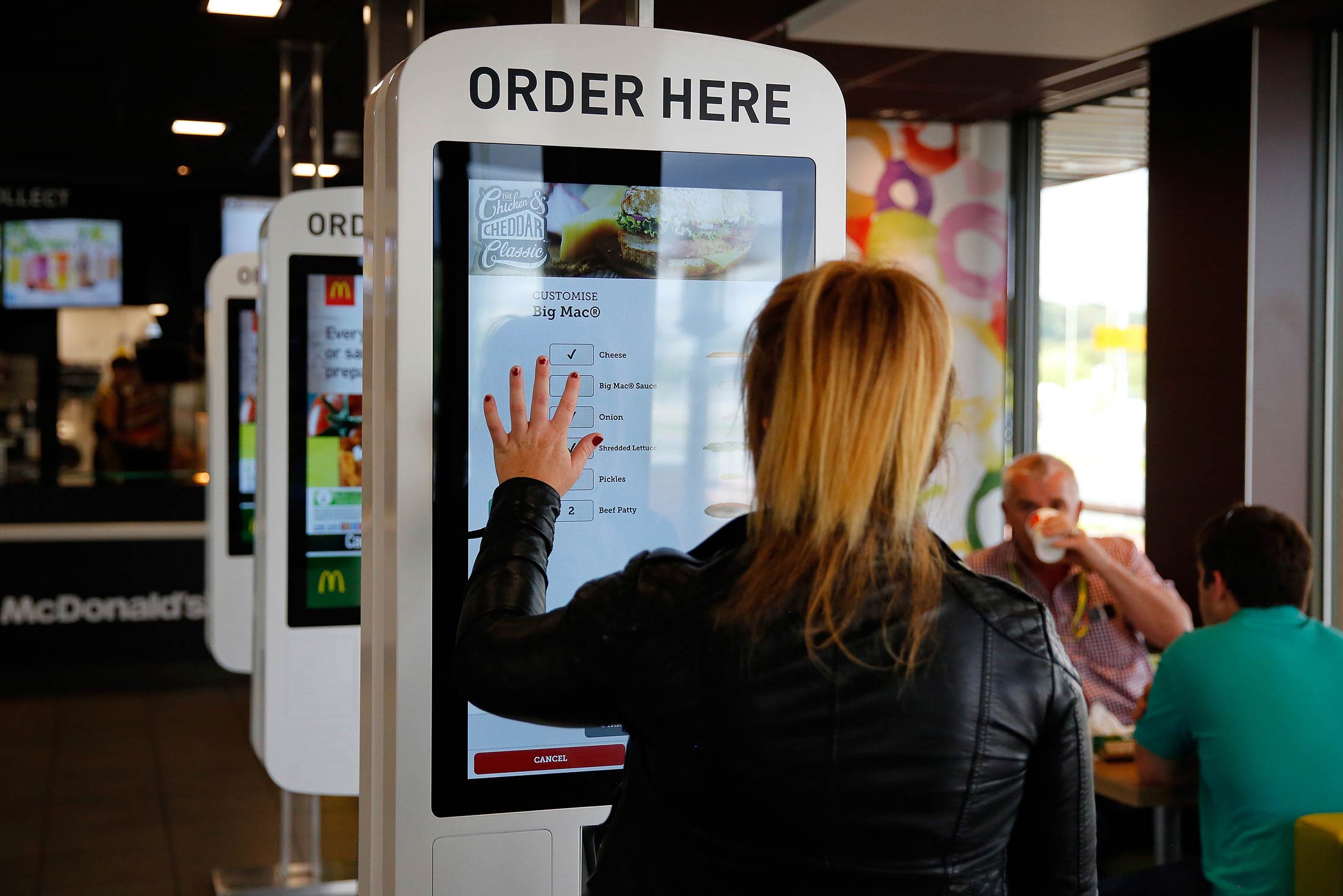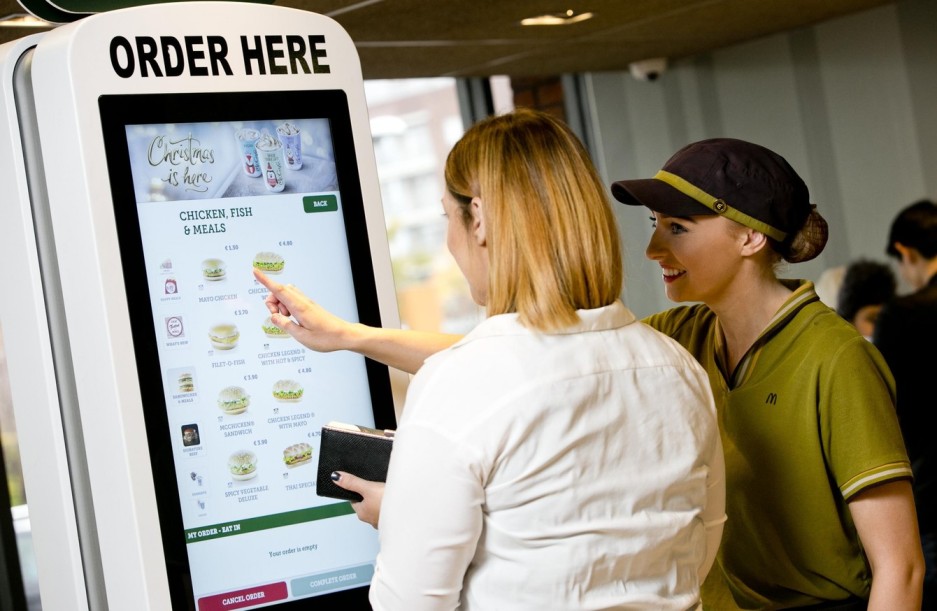
Blog
Read what's happening in FirstouchKiosk | Keep update yourself about best digital signage solution & technology. Learn how digital signage / digital kiosk / digital notice board and digital standees can help in your business growth.

In an era where speed and convenience reign supreme, customers no longer just want fast service—they demand it. Long lines and slow ordering processes don’t just frustrate patrons; they cost businesses valuable sales and loyalty.
One smart solution that’s gaining popularity is the self-ordering kiosk. From fast food restaurants to cinemas and even shopping malls, these kiosks are changing the way businesses operate.
We will explore how self-ordering kiosks can increase sales, reduce wait times, and improve the overall customer experience. We’ll also touch upon how businesses can strategically use this technology to stay ahead of their competition.
A self-ordering kiosk is a digital touchscreen terminal that allows customers to place orders by themselves without the need to interact with a staff member. These kiosks are often found in quick-service restaurants (QSRs), cafes, food courts, and even airports.
They are connected to the point-of-sale (POS) system, kitchen display systems, and payment gateways, offering a seamless ordering and payment experience.
To deliver a smooth and reliable experience, the hardware of a self-ordering kiosk must be built for both performance and durability. Here’s a detailed look at the key components:
While hardware is the body, software is the brain of the kiosk. It controls everything from how the interface looks to how orders are managed. Here’s what you need to know:
One of the biggest advantages of a self-ordering kiosk is that it reduces customer waiting time. When multiple kiosks are placed, they can handle multiple orders simultaneously, which significantly reduces queue lengths.
Faster ordering = Happier customers.
Self-ordering kiosks are programmed to offer upselling and cross-selling options. For example, when a customer selects a burger, the screen may ask, “Would you like to add fries or a drink?”
This automated upselling increases the average ticket size, often more effectively than a human cashier who might forget or hesitate to upsell.
Miscommunication between customers and cashiers often leads to wrong orders. But with kiosks, customers select exactly what they want. This reduces errors and improves overall satisfaction.
Self-ordering kiosks can collect and analyze customer data—such as most ordered items, peak hours, and purchasing habits. Businesses can use this data to improve menu options, staffing schedules, and marketing strategies.
By automating the ordering process, businesses can operate with fewer front-line staff. While kiosks don’t replace staff completely, they free up team members to focus more on food preparation or customer service.
Some advanced kiosks offer customer profiles, loyalty program integration, and even language preferences—creating a more personalized experience for the user.

| Feature | Benefit |
| Touchscreen Interface | Easy and intuitive to use |
| Payment Integration | Accepts cards, UPI, wallets, and QR codes |
| POS & Kitchen Sync | Smooth backend operations |
| Custom Branding | Enhances brand image |
| Real-Time Menu Updates | Quickly change items or pricing |
| Multi-Language Support | Cater to diverse customer groups |
Yes. Modern kiosks come with:
It’s important to choose a trusted digital kiosk provider that ensures both software and hardware security.
The rise of self-ordering kiosks is not just a trend—it’s a shift in how businesses operate in the digital age. With benefits like reduced wait times, higher revenue, and improved customer experiences, kiosks are becoming an essential tool for future-ready brands.
If you’re in the hospitality, retail, or F&B industry, now is the time to consider investing in a self-ordering kiosk solution that aligns with your brand.
To sum up, here’s why self-ordering kiosks are a game-changer:
Whether you run a small café or a large QSR chain, a self-ordering kiosk can be your gateway to smarter operations and better profits.
Ready to Upgrade Your Business?
If you’re looking for reliable and customized self-ordering kiosk solutions, get in touch with Firstouch Solutions. Let’s bring efficiency, speed, and innovation to your customer journey
It is a touchscreen device that allows customers to place and pay for their orders without speaking to a cashier. It connects with POS systems to process orders smoothly.
Yes! Even small cafes and QSRs benefit from reduced labor, better order accuracy, and increased revenue through upselling.
Absolutely. Most kiosk providers offer options to customize size, material, finish, and even software branding to match your business.
Pricing varies based on hardware specs and software features. Basic models start from ₹70,000–₹1,00,000, while advanced kiosks can go beyond ₹2,00,000 per unit.
Most kiosks need internet (Wi-Fi or LAN) to sync orders, process payments, and push updates. Some features may work offline but limited to local transactions.
Yes, cloud-based software lets you manage multiple kiosks from one dashboard, ideal for chains or franchises.
Payments are processed using certified payment gateways and devices that follow PCI-DSS standards for maximum safety.
Yes. Reputed providers like Firstouch Solutions offer full deployment, training, and after-sales support to ensure smooth functioning.
BACK TO BLOG
we are always happy to help in ways that we can.